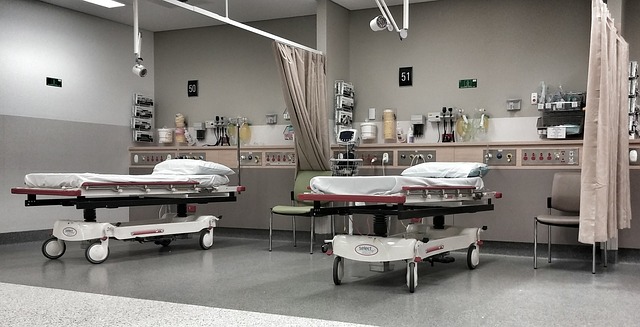Times are changing in cystic fibrosis. Anecdotally you hear about patients rapidly withdrawing treatments or sessions altogether. At my last clinic visit, we even discussed, “why don’t you try withdrawing your evening session? Start with every other night at first.”
If I didn’t have a baby coming our way in December, I would have been much faster to agree.
Still, I have dropped about 30% of my daily treatments, and if you add in my overnight tube feeds, which I no longer need, that number probably grows even more.
Even so, SIMPLIFY, the data driven, multisite study is looking to understand how people with CF on modulators can change their treatment routines. The work is funded by the CF Foundation if you’d like to check it out.
So what about clinic visits?
The current standard of care calls for 4 visits over the course of a year – and during them different tests and labs are performed as well as consultations with different parts of the care team. Most CF centers – at least in my experience – have done away with the once annual “big” visit where the care team historically tried to knock out all the required tests, X-rays, labs, etc. They were performed over the course of several hours, and by the end of the day I remember feeling sheer exhaustion, only to have to get in the car for the hour-long ride home.
Now, those tests are scattered throughout the year among the four visits. In that sense, the standard of care inside the clinic has evolved.
Another way the quarterly clinic visits have evolved is that in some places, especially for folks who live far from their CF center, patients can decentralize their visits and get outpatient work done at facilities closer to their homes.
I’ve even gone as far as getting PICC lines placed (of course that kind of thing isn’t part of the usual care routine) at a medical center closer to my home in New York rather than chugging all the way into Columbia – the recommendation to do so came from a friend who had a similar set up.
Now, we’ve all gone through the forced transition to telehealth. My experience with it over the last year and a half combined with my accelerating health, is that it probably should be a standard option for patients who realistically don’t need to be seen in-person at their clinic four times per year. Of course, nothing will replace the in-person visit to help patients and families build rapport with the care team, while there is certainly no substitute for laying a stethoscope on a patient’s chest. That much Emily-Kramer Golinkoff and I argued in our joint-USA Today piece last winter during the early days of vaccine administration.
Neither she nor I had seen our respective care teams in over a year at that point, and that just felt crazy.
But there probably is a happy medium. Even if one of the required visits is dropped and made a telehealth consultation, for most people that’s one less day off work or out of school. It’s less of a disruption, not to mention one less commute to the medical center, which really adds up if you have a several hours drive to and from the CF center. Or what about two telehealth visits and two clinic visits?
Not to come without data, the idea is getting thrown around.
In CF specifically, clinicians were surveyed on their telehealth experiences during the pandemic and overwhelmingly there was some support for its continued use, notwithstanding the work still needing to be done to understand patient outcomes.
Similarly, patients (not specific to CF) reported a degree of satisfaction with telehealth over the last year too, in a large retrospective study.
From a capacity standpoint, I’d expect overall healthcare utilization to fluctuate in a good way.
I would expect that because fewer people with CF are going into the clinic, there would be fewer scheduling issues with people visiting at the same time – leading away from the dreaded, “I wonder what bug that person has living in their lungs.” But it would also improve the flexibility for people with CF living with troublesome infections to have more opportunities to get seen in clinic.
Most centers designate days or times for their availability to patients living with aggressive and serious infections (it’s one of those infection control standards that exists inside clinics, but you probably don’t realize they are there unless you can only go to a clinic during a certain time and day).
Standardizing telehealth would necessitate fewer people with CF going to the clinic at any given time, while also allowing those who need more advanced in-person care to have some flexibility to receive it.
It will also drive competition between CF centers. If patients can suddenly access their favorite doctor halfway across the country, what is stopping them from doing so (if the provider is in-network)? Competition breeds winners, but is competition in medicine good? Maybe, maybe not.
There are some problems that first need to be addressed, though.
Telehealth is going to be an iterative process, and it’s going to rely on home reported outcomes for it to work out. Folks need to have access to certain medical tools to report test results to their care team so they can have a full picture of the patient’s health. That infrastructure is building (people need ways to collect medical data), and certainly isn’t quite there yet. I will admit it as a significant barrier to the above plan.
Another hurdle is reliable Internet. It’s 2021 and reliable Internet isn’t quite yet a standard in these United States. People can’t remotely report to the clinic if they do not have the ability to do so. It’s a cost/benefit analysis. Is it cheaper to use an internet connection or drive to the clinic?
Finally, and probably the most substantial is that there probably wasn’t too much thought given to the location of CF clinics when they were built based on interstate telehealth rules. At the beginning of the pandemic, the government put waivers in place to strip rules that barred physicians from performing interstate telehealth, as if the fiber optic cables running across our world somehow had a bearing on physician licensure. Those waivers are starting to go away, meaning if you don’t live in the same state as your preferred CF clinic, you may not be able to access remote healthcare with your team.
In CF this presents a problem. My CF Center at Dartmouth is a good example – it’s on the state line between New Hampshire and Vermont, but physically located in New Hampshire. The clinic draws the bulk of its patients from the twin states, but I wouldn’t be shocked if people from Maine and Massachusetts also sought care at the facility. If a patient doesn’t live in New Hampshire, could they reasonably get care?
A quick aside: it’s certainly possible the whole team there has licensure across several of the state lines, I’m just using it as an example.
The same goes for Columbia. Columbia is in upper Manhattan, but draws patients from New York, New Jersey, Connecticut and maybe even northern Pennsylvania. It’s a big transplant center, too, so it’s likely there are patients seen from all over the country.
Hopkins is another CF Center that’s located between several states.
Without the telehealth waivers, telehealth services can only be rendered to parts of the patient population based on location. That obviously won’t work.
Those issues, though, shouldn’t stop clinicians from trying to understand the outcomes of patients who flex down to some level of standard telehealth care (yes, in some places around the country it is already in place based on the geographic region of the Center – think the Rockies or Alaska). Pilot studies are a reasonable ask to help care teams figure out how to make it work within our already complex, but hopefully simplifying care routines.





